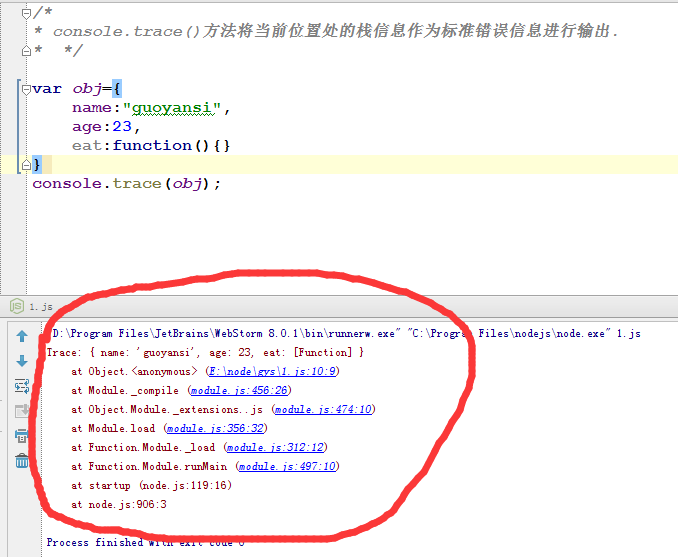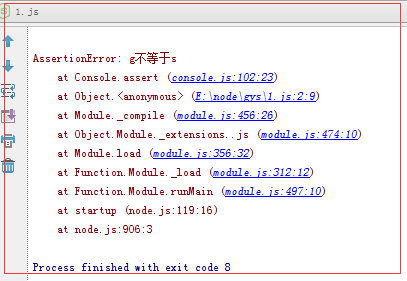Home >Web Front-end >JS Tutorial >Summary of console usage in node.js_node.js
Summary of console usage in node.js_node.js
- WBOYWBOYWBOYWBOYWBOYWBOYWBOYWBOYWBOYWBOYWBOYWBOYWBOriginal
- 2016-05-16 16:26:421731browse
//Create app.js page
// 1: Page code
console.log("log information");
//Execute this file (node app.js) in the page and you will see the log information in the console: "log information"
//Execute in another way: node app.js 1>info.txt (1 represents redirecting the standard output stream);
//At this time, you will see an info.txt file in the same directory as app.js, with "log information" in it.
//Two: Output all strings in order
console.log("%s","first","second");
//Output result: first second
//3. Convert the object to an ordinary string and then execute
console.log("%s","guoyansi",{name:"Dr. Sisi"});
//Output result: guoyansi { name: 'Dr. Sisi' }
//four:
//Convert string as numeric value
console.log("%d","25.6");
//Output result: 25.6
console.log("%d","guoyansi");
//Output result:guoyansi
//5 Output%
console.log("%%");
//Output result:%
console.log("%%","gys");
//Output result:% gys
//6 Output the console.error information to the file
//Page code:
console.error("guoyansi is error");
//Use node app.js 2>err.txt to start this page
//There will be an additional err.txt file in the same directory. There is also "guoyansi is error"
in the file. //7 Directly start a file javascript.js that does not exist on the command line, like this:
// node javascript.js 2>info.txt
//Output result: There will be an additional file info.txt in the directory where the command line is located;
//The contents of the info.txt file are as follows
/*
module.js:340
throw err;
^
Error: Cannot find module 'E:nodegysjavascript.js'
at Function.Module._resolveFilename (module.js:338:15)
at Function.Module._load (module.js:280:25)
at Function.Module.runMain (module.js:497:10)
at startup (node.js:119:16)
at node.js:906:3
*/
//Eight: The usage of console.warn is the same as the usage of console.error()
//Nine: console.time() and console.timeEnd() output the execution time of the intermediate code (note: the parameters of time and timeEnd must be exactly the same)
console.time("for loop time:")
var a=0;
for(var i=0;i<10000000000000;i ){
a ;
}
console.timeEnd("for loop time:")
/*
* 10. The console.trace() method outputs the stack information at the current location as standard error information.
* */
var obj={
Name:"guoyansi",
Age:23,
Eat:function(){}
}
console.trace(obj);
//Output result:

I don’t know if you can understand it, but I can’t understand it anyway.
1 //Ten: console.assert() evaluates the expression result. If the execution result of the expression is false, output a message string and throw an AssertionError exception
2 console.assert("g"==="s","g is not equal to s");

Isn’t it very simple? . Anyway, I feel like I can’t understand it, haha
Related articles
See more- An in-depth analysis of the Bootstrap list group component
- Detailed explanation of JavaScript function currying
- Complete example of JS password generation and strength detection (with demo source code download)
- Angularjs integrates WeChat UI (weui)
- How to quickly switch between Traditional Chinese and Simplified Chinese with JavaScript and the trick for websites to support switching between Simplified and Traditional Chinese_javascript skills

